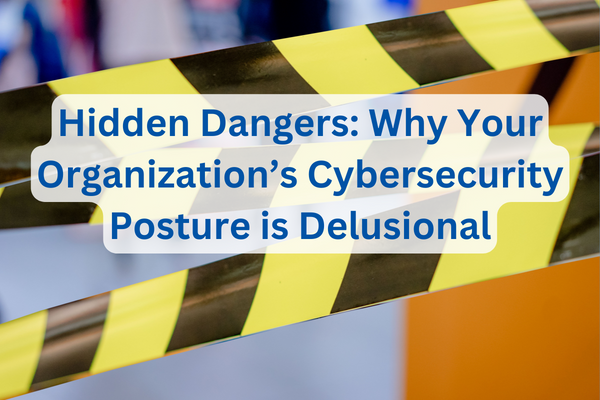In today’s digital world, organizations rely on technology to conduct their operations efficiently. However, this rapid digital transformation has also opened up new avenues for cyber threats. While many organizations invest in cybersecurity measures, there is a pervasive overconfidence about the maturity of their actual cybersecurity posture. In this blog, we will shed light on three critical aspects contributing to this delusion: underestimation of risk, reliance on manual processes for detection, and a reactive rather than proactive approach to preparedness.
- Underestimating Risk: One of the primary reasons organizations are confident about their cybersecurity posture is the underestimation of risk. Cyber threats are evolving at an alarming rate, with hackers employing sophisticated techniques to breach systems and steal sensitive data. However, many organizations fail to acknowledge the severity and likelihood of these threats. They believe they are not attractive targets or that their existing security measures are foolproof. This confidence can blind them to potential vulnerabilities, leaving them exposed to attacks.
- Relying on Manual Processes for Developing New Detections: As cyber threats become more sophisticated, organizations must constantly adapt their defense mechanisms. However, too many organizations still rely on manual analysis and rule creation for threat detection, which can be time-consuming and error-prone. For example, keeping up with the ongoing changes in your IT infrastructure as well as format changes to vendor logs is a time-consuming task and requires significant effort to ensure that detection rules are up-to-date. Adversaries can exploit gaps created when your detection rules fail and successfully breach your organization.
Although detection times have decreased on average, adversaries have become more intelligent, adaptable, persistent, and inventive. By failing to leverage automated technologies and machine learning algorithms, organizations limit their ability to keep up with the rapidly evolving threat landscape, ultimately leading to a false sense of security.
- Working a Large Backlog: Many organizations find themselves grappling with a significant backlog of security tasks, which further exacerbates the problem. As a consequence, organizations are forced into a ‘firefighting mode’ where they do not have the time to proactively identify and mitigate risks, instead, they scramble to address threats as they pop up. This reactive approach hinders the ability to stay ahead of cyber threats, perpetuating the delusion that they have a robust cybersecurity posture.
Moving from Reactive to Proactive
There are steps that organizations can take to help close the gap and improve their cyberattack detection capabilities. To establish a more realistic cybersecurity posture, organizations must adopt a proactive approach. Here are a few key steps they can take:
- Risk Assessment and Awareness: Organizations should conduct comprehensive risk assessments to identify vulnerabilities and understand the potential impact of cyber threats. This awareness will help shatter the delusion of invincibility and encourage a more proactive mindset.
- Automation and AI-Powered Solutions: By leveraging automated technologies and AI-powered solutions, organizations can enhance their threat detection capabilities. These advanced tools can analyze vast amounts of data, identify patterns, and detect anomalies more effectively, enabling a proactive stance against emerging threats.
- Prioritization and Resource Allocation: Organizations need information on the likelihood a vulnerability will lead to a successful compromise to balance security and functionality, performance, and ease of use. Ideally, we prioritize security efforts based on risk severity and then allocate adequate resources to address identified vulnerabilities. This approach ensures that crucial tasks are not buried in an overwhelming backlog, enabling a more proactive response to potential threats.
The delusion of a strong cybersecurity posture is a dangerous misconception that leaves an organization vulnerable to cyberattacks. By recognizing the challenges (underestimation of risk, addressing the reliance on manual processes, and tackling the backlog issue), organizations can transition from a reactive to a proactive stance. Embracing advanced technologies, prioritizing resources effectively, and fostering a culture of continuous learning will pave the way for a more robust and realistic cybersecurity posture in the face of an ever-evolving threats. Looking for the best ways to do that for your business or organization? Go ahead and talk to the experts at Idenhaus today.







